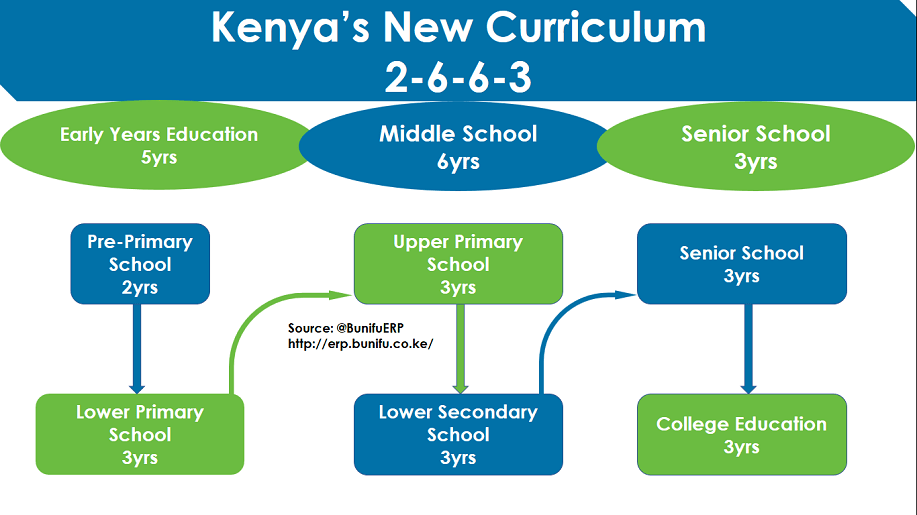Historical records from the travels of John Ludwig Krapf and Johannes Rebmann reveals that Kenyans had access to education as far back as 1728, with a Swahili manuscript Utendi wa Tambuka (Book of Heraclius) attesting to the fact. The C.M.S. missionaries interacted with locals in the coastl town of Mombasa and set up one of the earliest mission schools in the country at Rabai in 1846. Before independence, elementary education was based on the colonial system of education. In 1967, Kenya formed the East African Community with Uganda and Tanzania. The three countries adopted a the same system of education, the 7-4-2-3, which consisted of 7 years of primary education, four years of secondary education, two years of high school and 3 to 5 years of university education.
With the collapse of the East African community in 1977, Kenya continued with the same education system until the year 1985, when the 8-4-4 system was introduced, which adopted eight years of primary education, four years of secondary education and four years of university education except for speacilized courses which took up to 5 years of university education. Before joining primary school, student aged between 3-6 years must attend pre-primary for one to two years. Primary education is
universal, free and compulsory and usually caters for student ages 6 to 14. A major goal of primary school education is to develop self-expression, self-discipline and self-reliance while at the same time providing a rounded education experience. Secondary education begins around the age of fourteen and lasts for four years. Secondary school education, especially in public schools,s is subsidized by the government, with the government paying tuition fees for students attending public secondary school. The roots of higher education in Kenya started in 1956, with the founding of Nairobi’s Royal Technical College, a school that would in 1970 become the country’s first university –The University of Nairobi.




